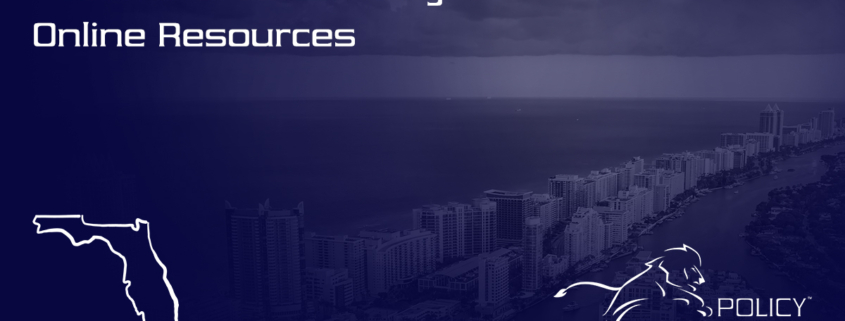President of PolicyAdvantage.com Tyson Lester, ChHC®, REBC®, RHU® recently sat down for a one-on-one interview with Kimberly Blanton (former Boston Globe reporter) of the “Squared Away Blog” at the Boston College Center for Retirement Research. Boston College is one of New England’s largest private universities, and is classified as an “R-1” research institution– engaged in the highest levels of research activity. Below is a transcript of the entire interview, and you can link to the official interview at the “Squared Away Blog” right here: ACA Insurance in the Time of COVID-19 (click to visit).
This is a re-blog, and the full interview is a Copyright© of the “Squared Away Blog,” and the Boston College Center for Retirement Research. All rights reserved. You can visit them here:
We hope you enjoy the interview below, and the important information it provides!
___________________________________________________
The urgency of the pandemic ushered in important changes to the Affordable Care Act (ACA), including a steep reduction in premiums for health insurance policies purchased on the state and federal exchanges through the end of 2022. Now Congress is debating reforms such as making the larger premium subsidies permanent and broadening the reach of the federal-state Medicaid program beyond the expansion introduced in the 2010 ACA.
We spoke with Tyson Lester, an independent insurance agent in southern California, about what the changes so far have meant for consumers. Tyson is licensed to sell policies in California, Florida, and Texas.
 Tyson Lester
Tyson Lester
Has the Affordable Care Act promoted disease prevention and care during the pandemic?
Some of the best feedback we got from our clients was about using the telehealth and remote options in their policies. It’s been an option for quite some time, but it was utilized more frequently during COVID-19. People were able to access primary care physicians, receive consultation and be diagnosed with COVID over the phone. It was amazing. It helped them because: 1) they were able to just make a phone call; 2) they were able to receive good consultation; and 3) if testing was necessary, they were able to go to a testing facility.
In response to COVID, did you see a rush into ACA policies last year?
ACA enrollment increased last year, but consumers’ response to the pandemic was mixed. In 2020, 12 states and Washington D.C. temporarily reopened their health insurance exchanges but people didn’t have the additional premium assistance to make it more affordable. In the remaining states, working people who lacked employer health insurance didn’t have the ACA as another option for coverage when the pandemic hit.
As for the workers who did have employer health insurance last year but then lost their jobs, they had to make a tough decision between whether they wanted to elect their employer’s COBRA, which is expensive, go uninsured, or go on the insurance exchange. But many people weren’t fully aware of the ACA’s longstanding option: when someone loses group health insurance from their employer, they can buy what’s known as a special enrollment ACA plan. In Texas, for example, part of the reason for last year’s increase in the uninsured population, in the midst of COVID-19, was that people who lost their jobs – and their employer coverage – weren’t even aware the ACA exchanges were available to them. We actually put a flyer together for this specific topic last year, because it was so important.
In March, the American Rescue Plan significantly increased the ACA premium subsidies through December 2022. What has been the effect?
For anybody who was previously enrolled, the American Rescue Plan significantly reduced premiums in California, Texas, and Florida and potentially their total out-of-pocket costs. As a result of the larger subsidies, I saw an influx of new customers throughout this year on California’s exchange, which – unlike most other states – opened a special enrollment for all of 2021. Earlier this year, the federal exchange opened, which caused an influx of customers too. This is where Texas, Florida and many other states sell their ACA policies. All states on the federal exchange shut down again in August but will reopen for 2022 in November.
In California, I’m anticipating we’ll see a busy enrollment this fall, because there’s more outreach here than in Texas and Florida. A lot of people are coming to the realization there’s more subsidy available. It takes some time for the general public to realize that. When they first passed healthcare reform, many people didn’t know what the exchanges were or how they worked. When word gets out, you see more people show up and use the premium assistance.
Will people drop their coverage when the federal premium subsidies run out?
It’s hard to say. But if clients see a significant increase in their premiums and can’t afford $200, $300 or $400 more per month, that can be a hit to their household budgets. It’s unfortunate in a pandemic if they would have to drop their health insurance.
Why are the ACA insurance deductibles going up?
The cost of health care and medications increase nearly every year, and the more the insurance companies are able to charge someone on the deductible the less they can charge in premiums. Another way to think about this is that the premiums are increasing at a lower rate than they would if they weren’t also increasing the deductibles.
Have rising costs affected your customers?
Deductibles are high and getting higher, especially for people whose income isn’t low enough to qualify them for the cost-sharing reductions available in some plans sold on the exchanges. But what I have also seen over the past few years is that the insurance companies are redesigning their benefits and making certain medical services more accessible – these are medical services that are not counted against the dollar deductible. That’s a good thing, and it mainly applies to the Bronze or Silver Plans.
For example, in some Silver Plans, the only thing subject to the deductible might be inpatient hospitalizations. Anything else – primary care, X-rays, emergency room visits – aren’t part of the deductible. So, when you go to the primary care doctor or get an X-ray, you might have a $35 copay. For a bigger expense like an outpatient surgery, you can find Silver plans in California where that surgery is not subject to the deductible – so the patient’s cost would be coinsurance only, which is 20 percent of the entire surgery bill, with no deductible having to be paid. These details really matter and determine how much people are spending out of pocket.
The policies offered across the country are standardized – Platinum, Gold, Silver, Bronze – but many hospitals and doctors don’t accept ACA plans. Most doctors accept Medicare. So why is the ACA different?
When they opened the exchanges in 2014, it created an influx of new patients into local health care systems. Those facilities or doctors had to make a determination, based on their caseloads, of whether they would accept the ACA’s negotiated rates for their services and how they would manage that influx. The ACA is mostly HMOs, which reimburse at a lower rate than PPOs. HMOs pay the same amount for every single patient and PPOs pay on a fee-per-service basis. Many established healthcare providers that are in demand have declined to accept individual and family ACA plans. It’s not to say this is always the case, and there is definitely access to quality care within ACA plans. But you want to keep this in mind so you’re making informed decisions when selecting a health plan.
Do the more limited options in the ACA plans affect the quality of care?
Yes, they can. For example, in California, some of the top-notch facilities are tougher to access. In the Los Angeles metro market, for example, a lot of doctors, hospitals, and healthcare facilities won’t accept ACA. UCLA’s medical system, which is No. 1 in California, only accepts one plan – Blue Shield of California’s PPO – on the state’s exchange. Cedars Sinai accepts a limited amount of ACA exchange plans. Texas had a similar thing happen. A good agent should listen to the clients and help them navigate that system.
In addition, the health insurance companies that offer on-exchange plans typically offer fewer plans than they do in the small-group employer market. The way this will be improved is through increased competition among the insurers. But it’s a region-by-region situation. Some places, including Texas and Florida, have seen increases in new plans that are available on the exchange and some areas have seen decreases since ACA’s inception.
Can you explain what it is about each state’s environment – regulations, population size or the insurers operating there – that affects the types of plans and, by extension, the quality of care available in ACA policies?
The exchanges operate the same way whether the customer is in Florida, Texas, or California. When it comes to benefit levels – copays, deductibles, out-of-pocket costs – there’s not much of a difference. The differences often come down to what is convenient for the insurance companies and what the state regulations are. Each insurer has found a niche market in the state they cater to. Where we’re seeing more competition is with smaller companies – names you haven’t heard of like Ambetter and AvMed. Florida Blue and Cigna operate in Florida, but the smaller regional providers are more prevalent in that state.
It’s different in California. Regional insurers like L.A. Care sell policies on the exchange but the big three insurers are the most prevalent: Kaiser Permanente, Blue Shield of California, and Health Net.
What makes California different than, say, Florida?
The variables include population size and regulation. Another big thing in California is that the companies on the exchange have local headquarters and are very familiar with the state’s regulations. California is also more pro-ACA, so it has done things other states have not. For example, they reintroduced an individual mandate [to buy insurance] after it was eliminated at the federal level. So more of the population is going to participate, because there’s a $750 minimum tax for not participating. California initiated a state subsidy too, which is paid on top of the federal subsidy and offsets the costs that consumers pay in premiums.
Residents of Florida and Texas have access to federal premium assistance only. Additionally, Florida and Texas didn’t expand Medicaid so that leaves a lot of poor people out of the health insurance system. To qualify for Medicaid in Florida and Texas, which did not expand their Medicaid programs under the ACA, your income must fall below the poverty level.
But in California, if your income is under 138 percent of poverty, you will be eligible for Medi-Cal, which is the state’s Medicaid. We as agents are trained to cover low-income people in California and agree to help them enroll in Medi-Cal. Medi-Cal and ACA are on the same computer system and are integrated. In Texas and Florida, I don’t know if low-income people are automatically enrolled in Medicaid.
What do you see as the biggest issues for people who buy ACA policies?
The Affordable Care Act really helped a lot of people with guaranteed issue: every plan has to accept people regardless of their health, and the insurers are required to cover 10 essential health benefits, from maternity care to colonoscopies.
Where the law didn’t work very well is for the people who aren’t getting subsidies because they earn too much to qualify for them. Their premiums have gotten very expensive, and they’ve had a hard time with the increases. But I think the biggest issue would be more limited access and narrower networks of doctors and hospitals than the employer plans have.
How might the healthcare exchanges be improved for consumers?
The policies need to be more affordable but that’s a difficult issue to solve, because it would require more government funding to help offset consumers’ costs. For example, the policies aren’t very affordable for people who earn too much to qualify for a subsidy. In California, the combined federal and state subsidies go to people earning up to 600 percent of poverty, but at the top of the range, you get only a very limited subsidy of maybe $10 to $50. If you’re paying $770 for a premium, what’s the difference between paying $800 and $775? The subsidy limit in Florida, Texas and other states that sell on the federal exchange is 400 percent of the poverty level.
One lower-cost option is the short-term insurance plans being sold in Texas and Florida – they’re outlawed in California. In 2017, when Congress repealed the individual mandate, the duration of these short-term, or “skinny,” plans was also extended from three months to three years. People who couldn’t get affordable ACA plans really turned to the skinny plans, which are not sold on the state insurance exchanges. But they don’t have the essential protections required by ACA plans, and you’ve got no guaranteed access if you have a pre-existing condition. The skinny plans may be better than nothing if you’re healthy. But I don’t like them.
Squared Away writer Kim Blanton invites you to follow us on Twitter @SquaredAwayBC. To stay current on our blog, please join our free email list. You’ll receive just one email each week – with links to the two new posts for that week – when you sign up here. This blog is supported by the Center for Retirement Research at Boston College.



 California: welcome aboard. Located in Los Angeles, California, PolicyAdvantage.com is happy to announce that our products and services are available across the entire state. We look forward to working with you.
California: welcome aboard. Located in Los Angeles, California, PolicyAdvantage.com is happy to announce that our products and services are available across the entire state. We look forward to working with you.





 Florida: welcome aboard. PolicyAdvantage.com is happy to announce that our products and services are available across the entire state, and we look forward to working with you.
Florida: welcome aboard. PolicyAdvantage.com is happy to announce that our products and services are available across the entire state, and we look forward to working with you. A gap in employment doesn’t have to mean a gap in health insurance coverage. Many of us are experiencing unprecedented changes in our lives, and we’d like everyone to know that PolicyAdvantage.com is providing more support than ever before online to individuals, families, and companies.
A gap in employment doesn’t have to mean a gap in health insurance coverage. Many of us are experiencing unprecedented changes in our lives, and we’d like everyone to know that PolicyAdvantage.com is providing more support than ever before online to individuals, families, and companies.